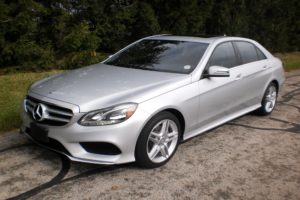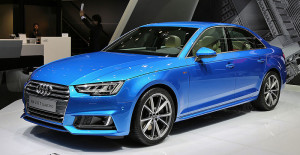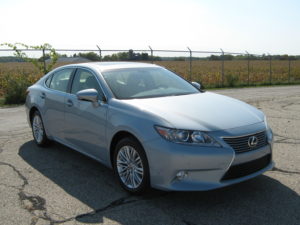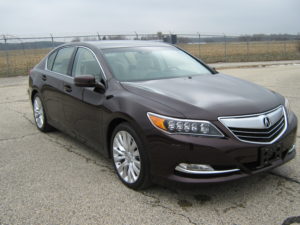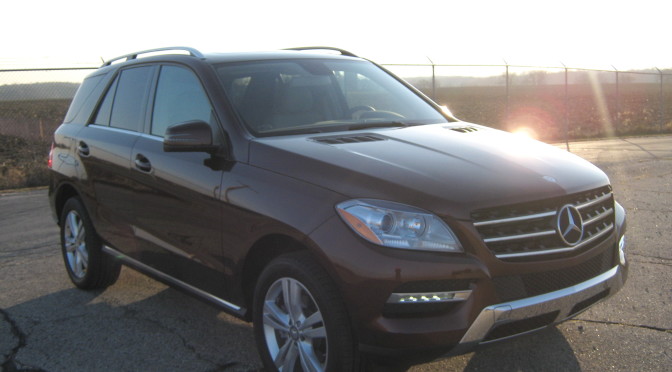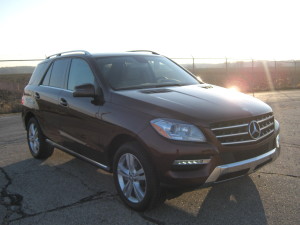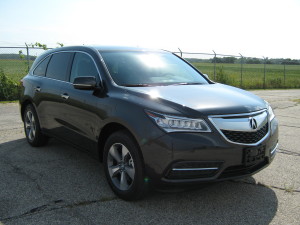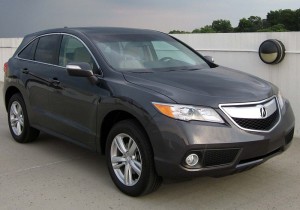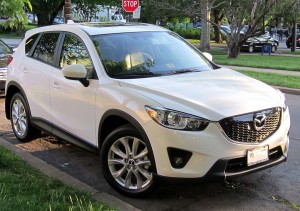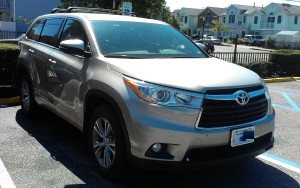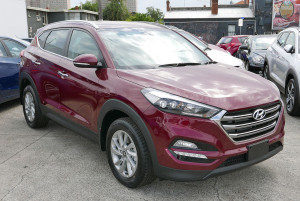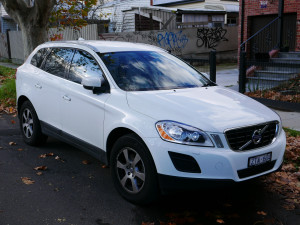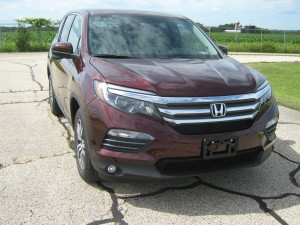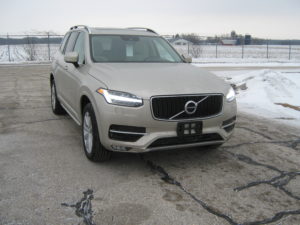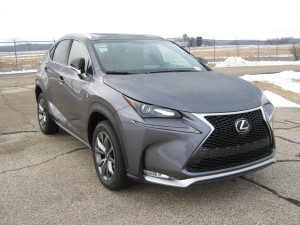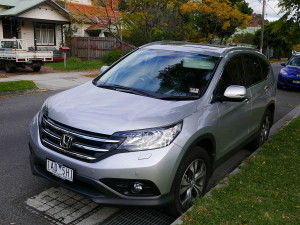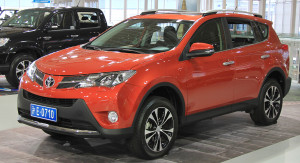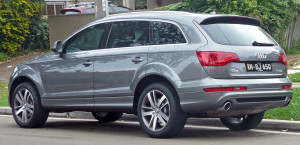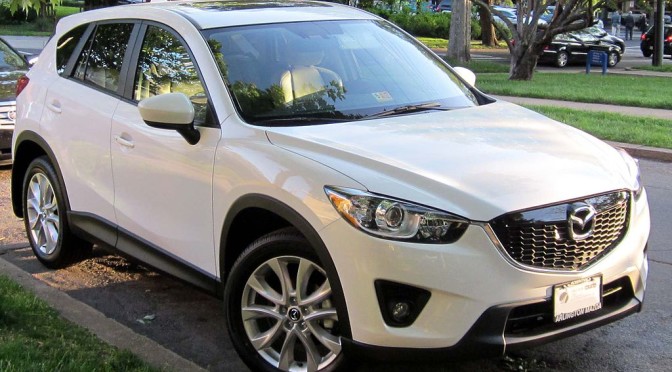This is the sixth part of a series of the vehicles you want to be in if you’re about to experience a rollover. The previous posts in this series are available here:
1. Rollover Crash Protection: The Safest Family Minivans in 2015
2. Rollover Crash Tests: The Safest Midsized Family Cars, 2016
3. Rollover Survival: The Safest Small SUVs & Crossovers, 2016
4. Rollover Survival: The Safest Family 2 & 3 row SUVs, 2016
5. Rollover Crash Protection: The Safest Luxury Cars in 2016
It has been a pleasure to research, write, and share these comparisons, but there’s still one class of vehicle we haven’t looked into yet: small ones. After all, there aren’t just SUVs, minivans, pickup trucks, and larger cars on the road. Many people choose sub-compact, mini, or compact cars for efficiency (whether fuel-or parking-related) or environmental reasons, or simply because they’re interested in saving money and don’t need larger vehicles. Whatever your reason for driving one, I want you to know what the best small cars are when it comes to rollover avoidance and survival.
I’ve written a series of similar articles on safe vehicles for side impact collisions (here are the safest 2015 cars, small cars, minivans, and SUVs and crossovers for surviving side impacts). Now let’s take a look at which factors play a role in surviving a rollover in a given vehicle.
What does a small car need to keep my loved ones safe before or during a rollover?
1. Electronic stability control. ESC reduces rollover risks by acting like an advanced version of ABS; it can brake individual tires to help keep your vehicle headed in the same direction as your steering wheel. The NHTSA estimates it cuts the risks of a fatal single vehicle crash by a full 50%. This is technology you want on your side whenever you’re behind the wheel (much like the seat belt and frontal airbag).
2. Rollover-sensitive side airbags with head and torso coverage. Once you’ve got ESC, you’ll also want side airbags programmed to activate when a rollover is imminent. ESC doesn’t help you once a rollover is actually occurring, but side airbags that deploy to keep your head from banging against the windows, roof rail, or vehicle frames can help tremendously. Remember that you have no control over your body during a rollover, so it’s not a matter of “bracing yourself” before a crash.
3. A strong roof. Finally, a strong roof is essential for keeping your survival space intact during a rollover. If your car is flipping and your roof crushes when you’re upside down, you aren’t going to live to see the ambulance. Similarly, even if the roof doesn’t collapse into your head but simply buckles enough to detach your seat belt frame or put your airbags out of position, your odds of survival will drop rapidly. A strong roof can mean the difference between walking away from a rollover and being buried a week later.
How strong does a car’s roof need to be to keep from crushing in a rollover accident?
That’s a great question, and if you ask the NHTSA and IIHS, you’ll get two different answers. The NHTSA used to think that a roof only needed to support 1.5x the weight of a vehicle before crushing by several inches, and they also only felt this rule needed applying to vehicles weighing less than 6,000 pounds. The NHTSA’s guidelines didn’t go far enough; in a rollover involving a drop of just a few inches to the ground, a vehicle can easily put several times its own weight on its roof. This leads to the tragedies I’ve spent years writing about on this blog.
As a result, the IIHS came along and made up their own roof strength test and guidelines. They decided that a roof should be able to withstand at least 4.0 times its weight (known as the strength-to-weight ratio, or SWR), to be rated “good.”
Their threshold for an “acceptable” rating is 3.25x, while their threshold for a “marginal” rating is 2.5x. Below that, such as in the 1.5x range the NHTSA used to find acceptable, the IIHS marks a roof as “poor.”
Thanks to the IIHS, the NHTSA finally increased their SWR requirement to 3x the weight of the vehicle for vehicles under 6,000 pounds before the roof could cave in by several inches. They also created a requirement for vehicles between 6,000 and 10,000 pounds of 1.5x vehicle weight. Neither requirement is enough, but both are better than what the requirements used to be.
Given these factors, I put together a list of the best model 2016-17 small-styled cars to be inside when trying to avoid or survive rollovers. I weighed and combined the three metrics I described above for optimum rollover safety. To only consider the best of the best large cars, I limited the list below to sedans and hatchbacks with ESC, roofs with SWRs of 5.0 or greater, and roll-sensitive side airbags; I then sorted these vehicles by roof strength. Each SUV is identified as a 2016 “Top Safety Pick+” by the IIHS, which means they all feature good frontal, side, roof, and head restraint scores, as well as advanced or better frontal crash prevention with optional features. I used the TSP+ as another filter to ensure these vehicles were at the forefront of recommended technologies.
The safest small cars for avoiding and surviving rollovers in 2016
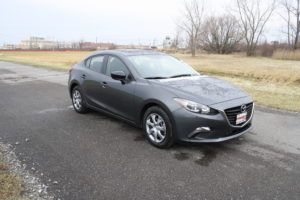 6.36: 2014-2016 Mazda 3 Sedan and Hatchback
6.36: 2014-2016 Mazda 3 Sedan and Hatchback
The Mazda 3 sedan and hatchbacks are jointly the safest small cars you can be in during a rollover, per my estimations, with a roof capable of supporting more than 6.3x the weight of the vehicle before significantly caving in. Like every other vehicle on this list, it also features rollover-sensitive side airbags, good front and side impact scores, and electronic stability control.
If you’re interested in saving money, the 2011-2013 Mazda 3 hatchback also features a great roof score at 5.09x, as well as ESC and side airbags, but the side airbags do not include a rollover sensor. Prior to 2011, neither roof scores nor ESC are present, so I wouldn’t recommend models older than that year.
My full 3 across car seat guide to the Mazda 3 is available here.
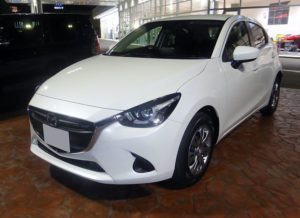 6.22: 2016 Scion iA / Yaris iA / Mazda Demio / Mazda 2
6.22: 2016 Scion iA / Yaris iA / Mazda Demio / Mazda 2
The Scion iA is the same vehicle as the soon-to-be released Yaris iA (since the Scion brand is being discontinued), and is actually a rebadged Mazda 2 (which is also no longer sold in the US), making this the second strong-performing Mazda on the list with a roof capable of supporting 6.22x the vehicle’s weight before collapsing by 5 inches.
If you’re interested in saving money, the Mazda 2 also offers a back catalog to dive into. The 2011-2014 Mazda 2 also features a good roof score with a strength-to-weight ratio of 4.18x, as well as side airbags and ESC. However, the side airbags don’t feature rollover sensors.
My full 3 across car seat guides to the Scion / Yaris iA and Mazda 2 are coming soon.
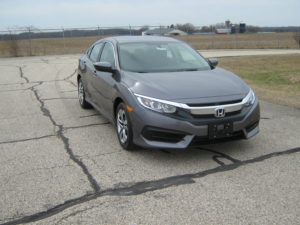 5.78: 2016 Honda Civic Sedan
5.78: 2016 Honda Civic Sedan
The newly redesigned Civic is another strong choice in the small car segment for rollover protection, featuring a great roof score of 5.78x.
To save money, consider all years of the Civic back to 2012, which is the first year where ESC is standard across all trim levels. You’ll also get side airbags, although they won’t have rollover sensors, and a great roof score at 5.85x. Paradoxically, this is actually a better SWR than what’s found in the current generation Civic; that said, the newer Civic is still a much safer overall vehicle, as it also includes a good small overlap frontal crash score as well as basic levels of front crash prevention. I wouldn’t consider models before 2012 due to the lack of standard ESC before that model year.
My full 3 across car seat guide to the Civic is available here.
 5.78: 2016 Volkswagen Golf / GTI / SportWagen
5.78: 2016 Volkswagen Golf / GTI / SportWagen
I recently featured the Golf / GTI as the 2015 leader for small cars when it came to side impact collision protection, and am happy to see the vehicle appear here in the list of the best small cars for rollover protection. It’s well designed to protect its occupants, and features an SWR of 5.78.
Prior to 2016, I’d consider the 2010-2015 Golf to save money, as it features a great 5.25x roof, ESC, and side airbags, although they don’t come with rollover sensors. More broadly, ESC is available from 2009 onward as a standard feature, as are side airbags.
My full 3 across car seat guide to the Golf / GTI is available here.
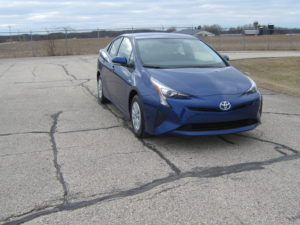 5.67: 2016 Toyota Prius
5.67: 2016 Toyota Prius
The Prius is the most fuel-efficient vehicle on this list, and also makes a strong showing with its 5.67x roof score. It’s also the only hybrid to make the list, and likely to be one of the safest vehicles here. I recently wrote about how the 2011 Prius was also safer than a wide range of larger vehicles, and am happy to see it on this list.
If you’re on a budget, look into the 2011-2015 Prius; it features a good roof with a 4.20 SWR, side airbags, and ESC. Unfortunately, it doesn’t feature rollover-sensitive side airbags until 2016. The 2011 Prius, however, was estimated by the IIHS to have the fewest numbers of driver fatalities of any car in its class, with an estimated 16 driver deaths per million registered vehicle years (4 of which would be attributed to rollovers), a testament to the safety of the Prius.
My full 3 across car seat guide to the Prius is available here.
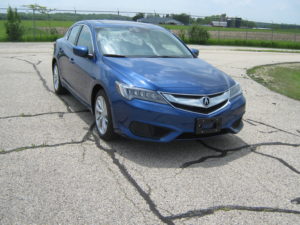 5.64: 2016 Acura ILX
5.64: 2016 Acura ILX
The ILX is essentially a modified 9th-gen Honda Civic with luxury updates, and it makes a strong showing with a roof capable of supporting 5.64x its weight. Because it’s a relatively new model, you’ll only be able to go back to 2013 for savings, but every year of availability includes the stellar roof score as well as side airbags, although only the 2016 model year includes a rollover-sensor.
My full 3 across car seat guide to the ILX is avaliable here.
5.27: 2015-2016 Nissan 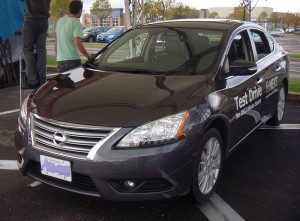 Sentra
Sentra
The Sentra is one of the most affordable vehicles on the list, and the only offering from Nissan. It features a good roof score of 5.27x. Like every other vehicle on the list, it comes with good safety scores all around as well as basic levels of front crash protection.
If you’re interested in saving further money, you might consider the Sentra as far back as the 2011 model year, as this is when it becomes available with ESC standard. However, it also features a roof score of only 3.44x until 2013, which the IIHS grades as “acceptable.” Additionally, while it features side airbags, it overall only has an “acceptable” side impact score, and the side airbags don’t include rollover sensitivity. The roof score improves to 5.27x in 2013 while the side impact score improves to “good.”
My full 3 across car seat guide to the Sentra is available here.
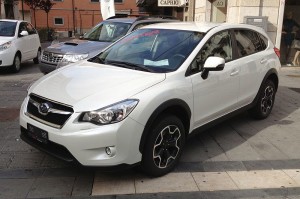 5.20: 2013-2016 Subaru XC Crosstrek
5.20: 2013-2016 Subaru XC Crosstrek
Finally, the Crosstrek is another quality vehicle to keep in mind when looking for a small car with rollover protection. The latest Crosstrek features a good roof capable of supporting 5.20x its weight before collapse.
It’s important to note that, while the Crosstrek and Impreza lines are generally identical in safety features, seeing as the Crosstrek is a raised version of the Impreza, the two vehicles differ substantially with respect to rollover safety, as the Impreza does not feature rollover-sensitive side airbags.
My full 3 across car seat guide to the Crosstrek is available here.
In conclusion, any of these small cars will be among the absolute safest you can be in during a rollover today. They feature ESC to reduce the risks of rollover involvement to begin with, rollover-sensitive side airbags to protect you should rollovers occur, and strong roofs to preserve your occupant space and allow your seat belts and side airbags to do their jobs while the rollover occurs. These are life-saving technologies, and we’re blessed to live in an era where they exist and are widely available and increasingly affordable.
What do I do if the small car I bought or am considering wasn’t on the list?
Due to space constraints, I focused on only listing the best of the best small cars currently available for rollover protection. This doesn’t mean that these are the only safe cars out there right now. Any car with a SWR of 4.0 or higher, ESC, and roll-sensitive side airbags is already going to provide a large amount of protection if you’re unfortunate enough to get into a rollover situation.
If you’re considering an car that doesn’t have the features above, you’ll want to make sure you’ve got ESC at an absolute minimum, followed by a strong roof, and roll-sensitive side airbags. If you have to choose between a strong roof and roll-sensitive airbags, I’d go with the roof score, presuming you have side airbags in both vehicles. However, ESC is by far the most important of the three technologies to have, as prevention is always better than having to deal with the cure, and avoiding a rollover is much better than having technology to increase your odds of surviving it once it’s already occurring.
We can’t control everything. The safest option is still not driving at all, followed by driving as little as possible. But if you’ve got to drive, drive safely, and do your best to choose a safe vehicle. If you’re going to use it with children, definitely check out the plethora of best practice articles I’ve written here on choosing safe car seats, installation tips, seat reviews, and more information to help you make informed decisions.
I loved writing this article, and I hope you enjoyed reading it. I look forward to writing more articles examining various factors in car safety design and how they relate to keeping you and your loved ones safer while on the road. Stay tuned, remember to avoid common mistakes parents make with car seats, and check out some 3 across car seat guides while you’re here.
 If you find my information on best practices in car and car seat safety helpful, you can do your shopping through this Amazon link. Canadians can shop here for Canadian purchases. Have a question or want to discuss best practices? Join us in the forums!
If you find my information on best practices in car and car seat safety helpful, you can do your shopping through this Amazon link. Canadians can shop here for Canadian purchases. Have a question or want to discuss best practices? Join us in the forums!

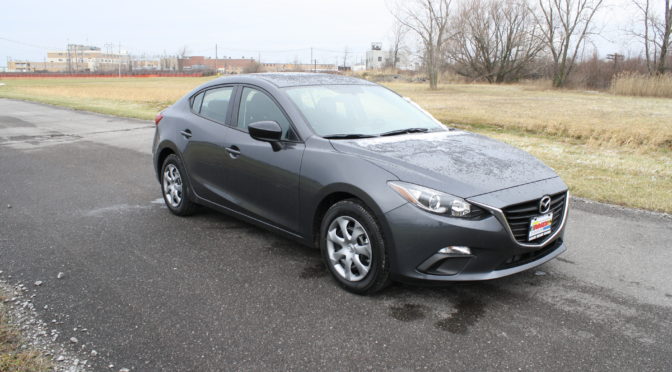
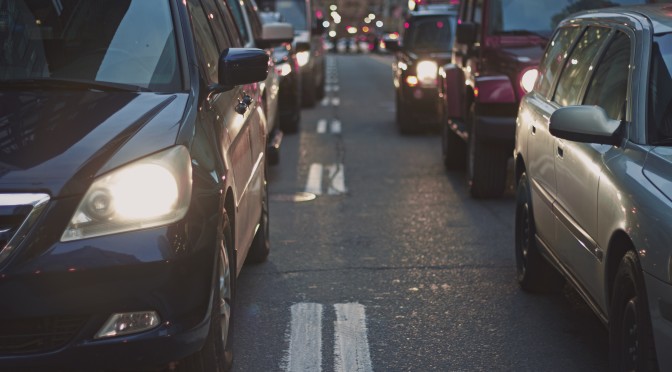
 When it comes to driving, there are four main ways to keep yourself and the ones you love safe on the road: 1. Avoiding driving entirely, 2. limiting driving, 3. driving safely, and 4. driving safe vehicles. Much like reducing, reusing, and recycling, the earlier actions are more effective than the later actions.
When it comes to driving, there are four main ways to keep yourself and the ones you love safe on the road: 1. Avoiding driving entirely, 2. limiting driving, 3. driving safely, and 4. driving safe vehicles. Much like reducing, reusing, and recycling, the earlier actions are more effective than the later actions.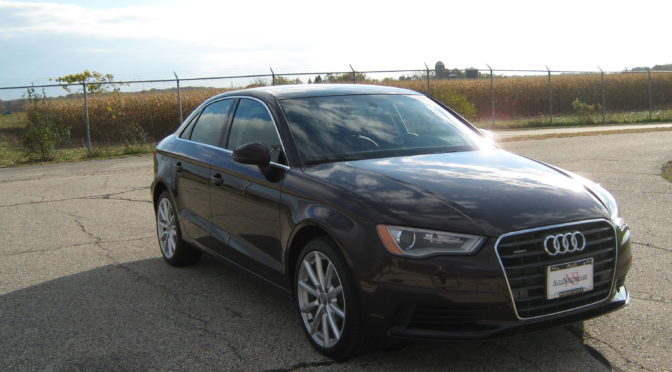

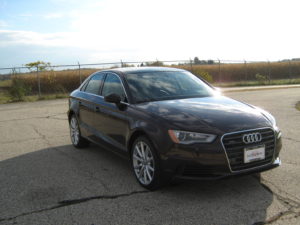 6.20: 2015-2016 Audi A3
6.20: 2015-2016 Audi A3